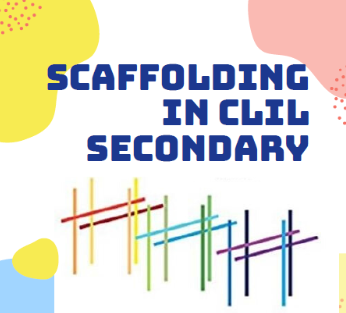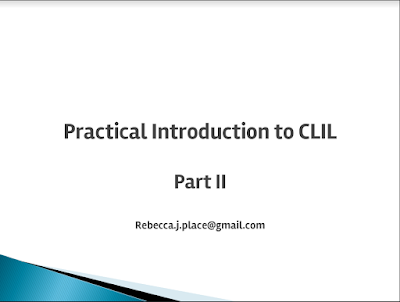Scaffolding
is a great way to engage students in a lesson from the very beginning. Scaffolding helps building skills
and competences by helping learners to understand the contents and the language using different estrategies that support them to build skills and competences which will be transferred to other
In order to make scaffolding effectively, we should always have in mind
the objective of
our lesson, the students’ needs and the task sequencing, and
focus our scaffolding where the help is needed to achieve intended learning
outcomes.
Remember that Scaffolding means helping
learners to build and develop skills and competences, and it helps teachers to attend diversity and foster
creativity and autonomy within the classroom.
 “I’ve seen teachers burn out
because of the effort they put into planning, so it’s important to start
slowly, to take small steps, bite-size pieces and ideally work in a team –with
language and content teachers.”
“I’ve seen teachers burn out
because of the effort they put into planning, so it’s important to start
slowly, to take small steps, bite-size pieces and ideally work in a team –with
language and content teachers.”
David Marsh: Extract from a Foreword
in:
101
Scaffolding Techniques for language and teaching and learning,
by
Donna Lee Fields. Octaedro
Editorial. Barcelona 2019.

Donna Fields was at the Centro de Formación del
Profesorado teaching the course: Scaffolding for CLIL Secondary.

Click on this image to see her presentation
 |
| Download the activities carried out during the face to face course |
If you click on your subject, you can see the activities created by @educacyl teachers after the face to face session course held by Donna Fields:
From CFPI we want to provide bilingual teachers with a range of resources to teach subjects in English within the CLIL approach.
WELCOME
BIBLIOGRAPHY and WEB BIBLIOGRAPHY
- BALL Phil, KELLY Keith, CLEGG John: Putting CLIL into practice. 2015 Oxford University Press
- COYLE Do, HOOD Philip, MARSH David: CLIL. Content and Language Integrated Learning. 2010, Cambridge Universitiy Press
- Liz Dale and Rosie Tanner: CLIL Activities. A resource for subject and language teachers. 2012. Cambridge University Press-Popular Science: great to obtain articles and information for the students.
https://www.popsci.com/
-Science Sparks: https://www.science-sparks.com/
-Learning Science: http://www.learningscience.org/translate_main_page.htm
This is a summary of our course on CLIL for subjects: Natural Science, Maths, Technology, and Physical Education.
Click on the pictures to enjoy the lectures:
This presentation uses a Physical Education class to show many CLIL activities which can also be used in the Science area.










No comments:
Post a Comment